Piezein Circuit
san francisco | california
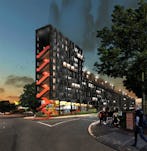
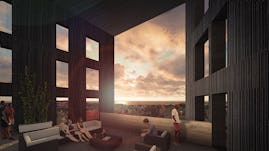
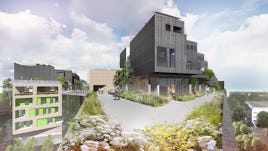
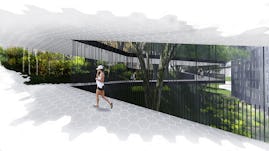
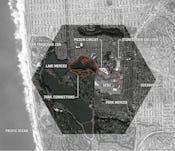
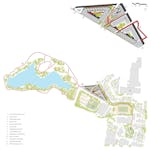
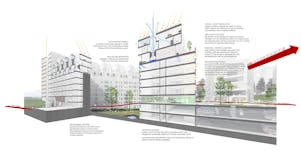
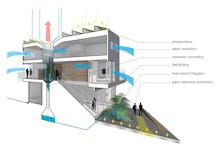
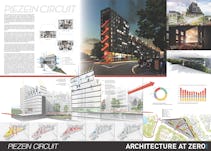

Designed to become a fulcrum for the campus as well as the surrounding neighborhood, Piezein Circuit is a zero net energy student housing complex with 784 housing units on the San Francisco State University campus. It sits as a hinge between a regional retail center, an underutilized lake and public park, the campus core, high density housing, and recreational facilities. The pedestrian path is proposed as an architectural armature, a generator for neighborhood spaces, and a production platform for renewable energy -- all from the idea of a simple stroll.
The sustainable components of the Piezein Circuit begin at the scale of the individual user and living unit. Both passive and active sustainable design features address all scales as they are propagated along the piezoelectric path from doorstep to streetscape, the building and beyond.
Micro-impluviums are used in key locations, such as the denser areas of the building, to collect rainwater in shallow pools. As the water evaporates and mixes with air in the atrium, it produces a natural cooling effect for the adjacent units. This coupled with stack ventilation for night flushing provides a thorough passive strategy for cooling the thermal masses of living areas. As for an overall heat island mitigation strategy, a layer of vegetation is applied to all roof areas where possible to provide shade and evaporative cooling, reducing not only the roof temperatures, but the temperature of the surrounding air.
To provide a large scale, practical form of renewable energy, grid-tied solar photovoltaic (PV) panels are applied to roofs and facades in areas with the most efficient orientation and full sun exposure. A photovoltaic thermal hybrid system (PVT) is used on roofs in conjunction with this to also provide for water heating, as this is much more efficient than a pure PV design, and the cooling effect of water assists in generating electricity at a much higher efficiency.
In a net zero building with such a high occupancy, it’s difficult to dismiss the energy being continuously exerted by its residents. In multi-family complexes, there is a constant ebb and flow of human activity throughout the common circulation and gathering spaces. In order to harvest this energy produced, an organized series of circulation conduits are situated throughout the building, guiding foot traffic into calculated stretches. Clusters of piezoelectric floor tiles placed in these paths capture the wasted energy from the applied pressure of the occupants’ footsteps converting this kinetic energy into electricity, and then redistributing it as needed. One principal path is generated and given prominence by design. This celebrated passageway leads through the entire complex and acts as a significant generator of building form, winding its way through all major spaces, spilling out to major public and university thoroughfares, and providing some of the best vistas the site can offer. This encourages more use, further aiding in the piezoelectric energy harvesting efforts, while having the added benefit of contributing to the increased overall health of the occupants.
Modus Studio, along with the energy design team at Entegrity (formerly Viridian), won the 2016 Professional Citation Award for the Architecture at Zero competition with Piezein Circuit.
| Typology | Multi-Family |
| location | San Francisco, California |
| completed | unbuilt [competition] |
| photography | modus studio |
| sustainability | Target: Net Zero Energy Certified |
Awards
- 2016 Architecture at Zero Competition Professional Citation Award